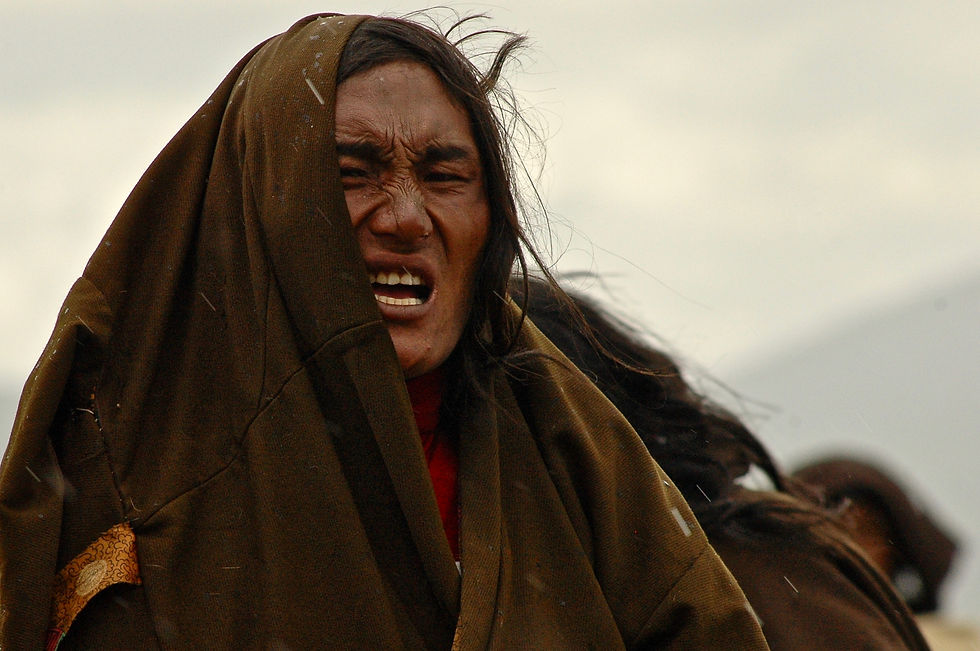Pu’erh´s Ancient Green Home- Part II
- Jeff Fuchs
- Mar 8, 2011
- 3 min read
We are heading to one of Xiao Yang’s ‘uncle’s’ homes for a sitting and sipping of a potent new batch of sheng (raw/green/unoxidized) Puer. Here the black Pu’erhs are referred to as “candy”, something “useless” and worse – something that utterly diminishes the classic bitter-sweetness of a tea. Once, when I casually mentioned to him that many refuse to drink any tea but ‘aged’ Pu’erh, Xiao Yang laughed, took a pull of his cigarette and said, “This is a foolish idea but if it helps sell our tea, what can I say against it. Tea should be fresh and strong. One can only know a tea’s quality if it is tried young.”

The moment we arrived to Xiao Yang’s uncle’s home, the uncle sprang into action, preparing that one vital necessity for tea: water.
We arrive to a home with a pointed thatched roof, and a withered ladder propped up to access the second story home into the home. Inside, there is not even a hint of daylight sneaking in. A languid and aquiline dog lounges with an eye on us.
In Yunnan’s south there is the perpetual hanging smoke in the air as if fires never extinguish, and with it the scented air takes on an almost perpetually narcotic effect.
Here there are no formal introductions made in the village. If you come with family you are almost beyond reproach and if you are coming for tea you are, in the eyes of locals ‘one of the enlightened’.
A round table awaits us beside a crackling fire. Hung above the fire is a kettle which gently rumbles – waiting. The uncle, a drawn handsome man with spectacular cheekbones, beckons us with long tea-stained fingers to sit. He squats by the fire and swivels himself around to a bamboo basket brimming with the familiar dried leaves of my dreams – tea from the ancient trees that surround the village. Variously called la or lo by the local Hani, ‘tea’ remains ubiquitous here – an ever-present member of the absolutely every event and moment.
One of the tea world’s great maladies is mixing (and calling) old tea tree leaves with inferior smaller tea tree leaves. Not that the tea is bad, but it is not in anyone’s eyes a true ‘old tree tea’ – and this constitutes a kind of fraud.

Tea batches are numbered and each number corresponds to a batch, location, and picker. Number 10 was a tea that set the tongue singing.
Grabbing a handful of leaves, uncle simply throws them into the pot, which he unhinges from its little branch above the fire. He waits just seconds before using that first infusion to ‘wash’ and heat bowls. A second hearty infusion is set before us. Before now, uncle has barely acknowledged Xiao Yang and I. Now his glowing eyes rest on my bowl, which is happily tilting into my mouth.
Lao Banzhang tea is famed for both its ko gan and wei gan – the abilities to stimulate both the sides of the tongue and then finish in a bitter sweet tang. It is not tea that seeps sweetness or chemical essences into the mouth, but rather it is a tea that inundates the mouth with the taste of earth and the taste of green power. Limited harvests and virtually unchanged production methods along with perhaps the earth’s most perfect tea producing trees ensure that the tea remains consistent and remarkable. Much like the tiny bodegas of Italy that produce limited bounties of exceptional wines, Lao Banzhang and other tea nooks are tiny heavens to the tea ‘inclined’.
Uncle sips his tea, his eyes never leaving my face. He nods at me and I nod back which is followed by Xiao Yang arching his eyebrow in a question. I give yet another nod which is quickly followed by Xiao Yang’s “It is from our village, of course it is good…a bit bitter though”.
Teas from Banzhang (most often refers to two towns) are picked, ‘fried’, dried with a combination of sun and shade, and consumed.
The results are potent….and pricey, with Spring first flushes easily running into the hundreds of dollars per kilo. These big leaf specimens can also fearlessly claim to be one of the globe’s great flag bearers of the Pu’erh world.
One of uncle’s comments before we got down to the heavy drinking session (which would in time include some potent local corm whiskey) perhaps summed up best the region’s simple tea philosophy, “Give each tea some time, some sips and then let your mouth decide whether it is good”.

In tea towns such as Lau Banzhang there is informality between the sacred leaves and the precious harvesters. Here leaves dry on a rooftop.




Comments